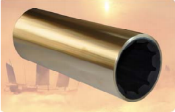Understanding the Importance of Metric Oil Seals in Machinery and Equipment Performance
The Importance of Metric Oil Seals in Industrial Applications
Oil seals, often referred to as oil or grease seals, are critical components in various mechanical systems. Their primary function is to prevent the leakage of lubricants, such as oil and grease, from machinery and to keep contaminants out. Among the many types of oil seals available, metric oil seals have garnered significant attention due to their standardized dimensions and widespread applicability across international markets.
Understanding Metric Oil Seals
Metric oil seals differ primarily in size and design from their imperial counterparts. They are designed according to the metric system, which is widely used globally, particularly in Europe and Asia. The primary advantage of metric oil seals lies in their precise dimensions, allowing for seamless integration into various machines and equipment. This standardization simplifies replacement processes and reduces inventory complexities for manufacturers and repair shops.
Metric oil seals are often categorized based on their construction materials, which may include rubber, silicone, or thermoplastic materials. Each type of material offers unique benefits suited to specific applications, such as temperature resistance, flexibility, and durability. For instance, nitrile rubber seals (NBR) are commonly used in applications requiring resistance to petroleum-based oils. In contrast, fluorocarbon seals (FKM) are ideal for systems that encounter high temperatures and aggressive chemicals.
Applications in Industries
Metric oil seals are utilized across numerous industries, including automotive, aerospace, manufacturing, and marine. In the automotive sector, they play a crucial role in preventing oil leaks in engines, transmissions, and differential housings. Their reliability ensures that vehicles operate smoothly, contributing to overall performance and efficiency.
metric oil seals

In industrial machinery, metric oil seals help maintain the integrity of heavy-duty equipment, such as pumps, motors, and gearboxes. By sealing the lubricant within these components, they protect critical parts from premature wear and failure caused by dirt and moisture ingress. This enhances the longevity of machines and minimizes maintenance costs, thereby maximizing uptime and productivity.
In the aerospace and marine industries, the reliability of metric oil seals becomes even more critical. In these applications, seals must withstand extreme conditions, including high pressures, temperatures, and potentially corrosive environments. Here, the choice of material and precision in manufacturing is paramount, as any failure could result in catastrophic consequences.
Choosing the Right Metric Oil Seal
Selecting the appropriate metric oil seal for a specific application involves considering several parameters. The most crucial aspects include size, material type, hardness, and the operating environment. For example, an application involving high temperatures may require seals made from specialized materials, while those used in food processing must meet strict FDA regulations.
It is essential to ensure that the chosen metric oil seal fits snugly within its housing to avoid failures. Improper installation can lead to premature wear or leakage, ultimately compromising the functionality of the entire system. Therefore, consulting with manufacturers or experts in the field is advisable when selecting the right seal.
Conclusion
Metric oil seals play a vital role in various industrial applications, ensuring the reliability, efficiency, and longevity of machinery and equipment. Their standardized dimensions cater to a global market, facilitating maintenance and replacements. As industries continue to evolve and demand higher performance and efficiency, the importance of high-quality metric oil seals will undoubtedly grow. By understanding their function, applications, and selection criteria, businesses can enhance their operational effectiveness and reduce costly downtime caused by seal failures. Ultimately, a small component like a metric oil seal can have a significant impact on overall machinery performance and longevity.
-
Understanding the Front Main Engine Seal: Purpose, Maintenance, and Installation
News Jul.29,2025
-
Understanding O-Rings and Seal Rings: Types, Applications, and Custom Solutions
News Jul.29,2025
-
Understanding Crankshaft Oil Seals: Rear Seals, Pulley Seals, and Their Role in Engine Integrity
News Jul.29,2025
-
The Importance of Front and Rear Crankshaft Seals in Engine Performance and Oil Management
News Jul.29,2025
-
Crank Oil Seals: Functions, Types, and Cost Considerations in Engine Maintenance
News Jul.29,2025
-
A Comprehensive Guide to O-Rings and Seals: Types, Materials, and Global Applications
News Jul.29,2025
-
Mastering Diesel and Performance Engine Maintenance: A Guide to Critical Oil Gaskets
News Jul.28,2025
Products categories















